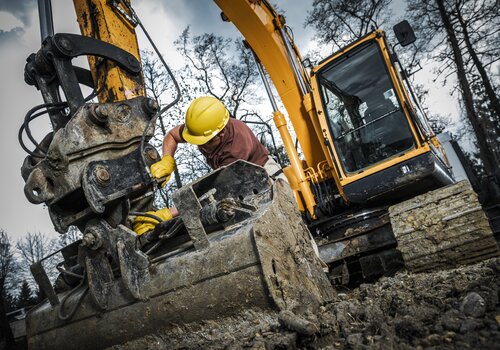The construction industry is experiencing a workforce shortage nationwide, but some states are feeling the strain more than others. The demand for skilled labor is driven by various factors, including urban growth, infrastructure needs, housing demand and disaster recovery efforts.
A new analysis of federal employment data released by the Associated General Contractors of America shows that four out of five states added construction jobs between September 2023 and September 2024. Texas added the most construction employees (42,300 jobs or 5.1 percent) followed by Florida (37,100 jobs, 5.9 percent).
Let’s look at five states with the highest need for construction workers, examining the forces behind this demand, the types of roles in short supply and what the industry might look like in these states by 2025 and beyond.
Texas: A Powerhouse of Growth and Infrastructure
Why Texas?
Texas is booming, and its growth shows no signs of slowing down. With major cities like Austin, Houston, Dallas and San Antonio experiencing population surges, demand for housing, commercial spaces and infrastructure has skyrocketed. Texas is at the forefront of the energy sector, with projects in oil, gas and renewables requiring specialized construction expertise. The state is also benefiting from data center projects with 28% located in Texas.
A number of companies have announced large projects breaking ground across the tech, medical, agriculture and transportation industries this year, while the push for sustainable energy is driving demand for solar and wind turbine technicians.
Future Outlook
With a population expected to grow rapidly and continuous investment in urban and energy infrastructure, Texas is likely to retain its high demand for construction labor well into 2025 and beyond. Experts project that both residential and commercial construction sectors will expand, creating jobs and setting the stage for Texas to lead in sustainable and smart infrastructure development.
Florida: Meeting Housing and Disaster Recovery Needs
Why Florida?
Florida’s high demand for construction workers is fueled by multiple factors, including its population growth and frequent exposure to natural disasters. As people flock to Florida for its warm climate and economic opportunities, the state is in urgent need of housing, transportation and flood-resistant infrastructure. Hurricanes and tropical storms also contribute to ongoing reconstruction and repair projects, making Florida a hub for construction labor. Health care construction is booming in the state thanks to a recent change in the state’s certificate of need requirements.
Future Outlook
Florida’s construction sector will need to focus on resilient, climate-adapted buildings to withstand extreme weather events. The state is likely to see heightened demand for workers skilled in climate-resilient construction and green building methods. As population growth continues, the need for new residential and infrastructure projects will likely create job stability for construction workers beyond 2025.
California: The Drive for Housing and Green Infrastructure
Why California?
California’s construction industry faces significant pressure due to housing shortages and stringent environmental policies. The state’s large population and dense urban centers require ongoing development, particularly in the affordable housing sector. California’s commitment to sustainability also means a growing need for green building and infrastructure projects.
Future Outlook
With a housing market that continues to be under pressure, California’s demand for construction workers is expected to remain strong. Projections indicate a steady increase in demand for sustainable construction specialists as the state targets ambitious green building initiatives for 2025 and beyond. Meeting the housing and infrastructure needs while adhering to environmental regulations will require a continuous influx of skilled workers.
New York: Revitalization and Expansion of Urban Infrastructure
Why New York?
New York, especially New York City, faces a massive demand for construction workers due to urban renewal projects, commercial building expansions and a growing need for modernized infrastructure. The state is also committed to ambitious infrastructure upgrades and has substantial investments in complex urban and transit renewal projects.
Future Outlook
With the need for modernized transit systems and infrastructure, New York’s construction industry is expected to remain robust. The state’s commitment to enhancing public transit and urban spaces suggests that specialized construction jobs will be needed in 2025 and beyond. A sustained demand for infrastructure improvements and urban renewal projects like the $16 billion Gateway Tunnel Project will likely provide long-term job opportunities.
Arizona: Rapid Growth and Housing Demand
Why Arizona?
Arizona’s construction needs are primarily driven by population growth, especially in cities like Phoenix and Tucson. The state’s warm climate and business-friendly environment attract new residents and companies, fueling demand for residential and commercial construction. Additionally, Arizona’s growing technology boom has created opportunities for specialized workers in commercial construction, particularly those with experience in data center infrastructure and energy-efficient design.
Future Outlook
Arizona’s construction demand is projected to remain strong as the state continues to attract businesses and residents. Looking toward 2025, the state will likely see sustained demand for residential construction to accommodate its growing population, as well as for tech-focused commercial infrastructure. Arizona’s construction workforce will need to adapt to both residential and commercial needs, likely creating a dynamic job market for construction professionals. A report by Arizona Office of Economic Opportunity predicts a need for more than 100,000 workers in the state, with sectors like construction and manufacturing leading the way.
PHOTO CREDIT: UNGVAR/BIGSTOCKPHOTO.COM












